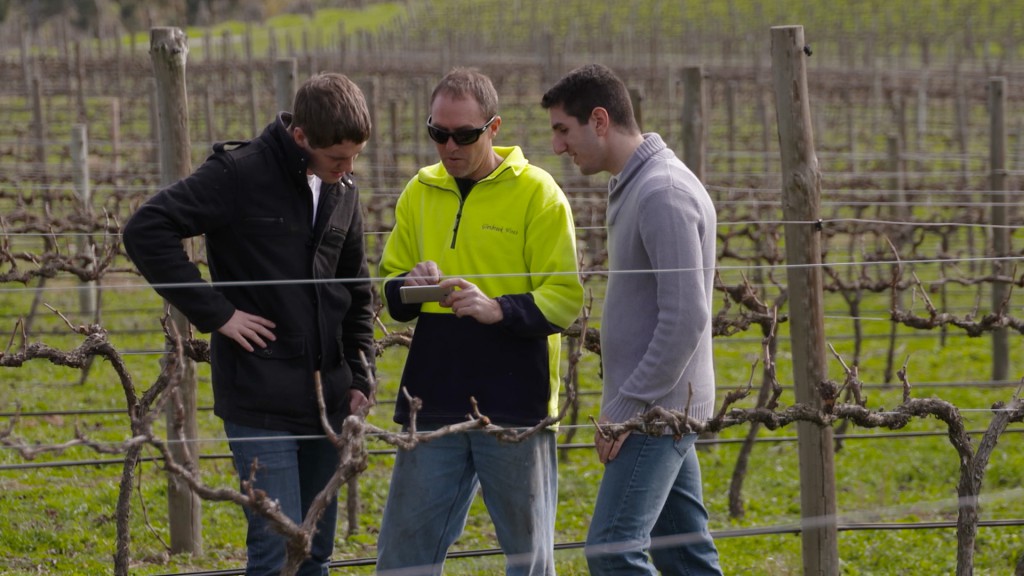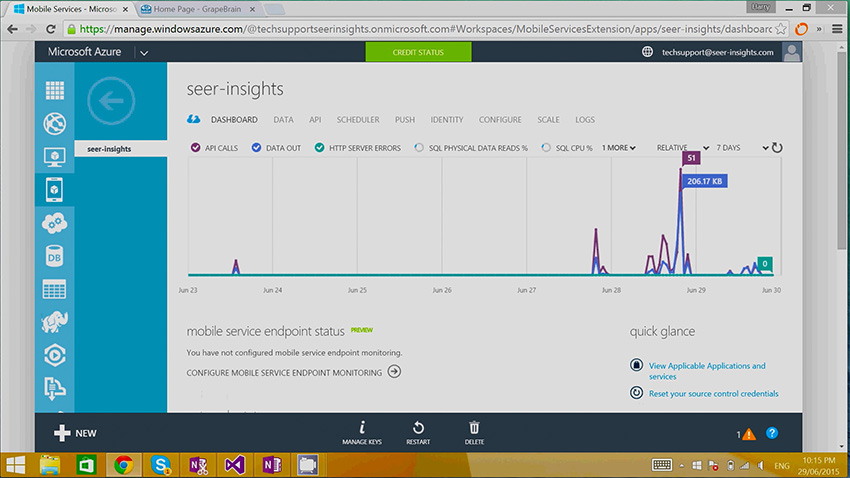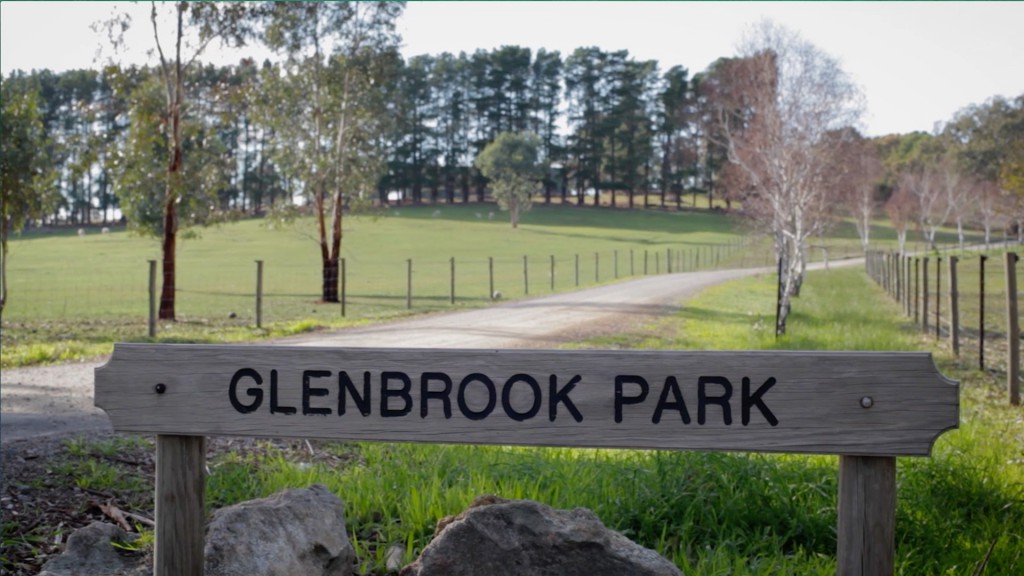Think of a business where predictions of the annual production can be out by as much as 30 per cent – and where no one will be the least bit surprised at that variation.
That’s the extraordinary situation today with grapes being grown for wine-making, and it’s an expensive problem that three Adelaide University students are well on the way to solving. In the process, they just might be solving problems with other farmed crops that could have implications for global food supply.
Harry Lucas, 20, Liam Ellul, 23, and Petros Bakopoulos, 21, make up the Seer Insights team, and GrapeBrain – described as an intelligent system which assists vineyard staff, growers and wineries in improving the accuracy of their yield estimates – is the company’s baby.
To date, GrapeBrain has taken them to a meeting with the South Australian Cabinet and will soon see them in Seattle, pitching to Microsoft executives.
As is often the case with innovative start-ups, the genesis of Seer Insights was by accident – with Liam and Harry stuck in a lift at University.
“At the moment wineries are using a pen and paper process to be able to estimate their yield. Growers will go out into their vineyard and record bunch counts while they’re out there. It’s all done on paper. They then do just basic maths by hand and end up with a yield estimation.”
“We started talking about how we thought the future was going to look and we started saying the same things as one another and it was pretty clear we were on the same wavelength,” Liam recalled. “Very shortly after that he told me about a competition the university was running. It was a business competition and he wanted somebody on board that understood business and was also very creative. So I was really excited to get on board and it’s just blossomed from there. It’s been a really fun time.”
Harry is studying Mechatronic Engineering while Liam is completing a double degree in Commerce and Law. Petros, who joined later, is a Mechanical Engineering and Finance student.
The competition was the Tech eChallenge, which was run by the university’s Entrepreneurship, Commercialisation and Innovation Centre and the School of Computer Science, in conjunction with Microsoft.
Initially the plan was to develop drones to help grape-growers identify problems with crops, but in the course of research they found from talking to growers that their most pressing problem was in accurately predicting their yield.
“At the moment wineries are using a pen and paper process to be able to estimate their yield,” Harry said. “Growers will go out into their vineyard and record bunch counts while they’re out there. It’s all done on paper. They then do just basic maths by hand and end up with a yield estimation.”
Unfortunately those estimates are notoriously unreliable, with inaccuracy of up to 30 per cent being both unsurprising and costly. In fact, Seer Insights believes the problem costs Australia around $200 million annually.
GrapeBrain takes all the available data which contributes to yield prediction, subjects that data to an extraordinary predictive analytics process which is a part of Azure Machine Learning, one of the services part of the newly announced Cortana Analytics Suite.
Data has, of course, long been available but it is the ability to quickly turn that data into insight that makes GrapeBrain so exciting.
The key is finding patterns and insights from both the current data and from historical data and shifting that from an analysis of what’s happened in the past to an accurate prediction of what might occur in the future.
“The GrapeBrain platform has two components, the phone application as well as the website component,” Petros said. “The phone application is used by the growers to do these mandatory counts to get data and then that data is processed and sent to the website component. The outcome for them is a very accurate yield estimate, and, in the future, a yield prediction for the next year’s crops.
“The coolest part of it is the mathematical operations in the back end. We make use of Azure Machine Learning, which is highly new age and wouldn’t have been possible five, ten, years ago.”
“We make use of Azure Machine Learning algorithms, which is highly new-age and wouldn’t have been possible five, ten, years ago.”
Harry is similarly impressed: “Effectively it’s a platform which we can run in the cloud, which we don’t have to worry about scaling. As more people use it, the system gets larger, it performs better. We don’t have to touch it.”
Through the help of funding from Microsoft’s BizSpark program and support from the company’s newly-established Innovation Centre in Adelaide, the team are now working on a third edition of the GrapeBrain prototype and are engaged in trials to test its accuracy.
“The Innovation Centre’s been really great for engaging us on a practical level that the more academic university stuff doesn’t really do, and it’s accelerated our learning a lot when it comes to business and the sorts of things we need to be doing,” Liam said. “And just having the support is great; that you can talk to some really talented people and get feedback.”
Prior to being named as South Australia’s Young Innovators of the year, the trio were personally invited by South Australian Premier Jay Weatherill to present to Cabinet.
“That would be my wow moment,” said Harry. “Meeting the Premier was fantastic. Jay Weatherill invited us in to come and speak in front of Cabinet, along with two other start-ups, to improve the amount of innovation that there was in the State.
“He wanted to inspire the Cabinet to be more favourable to innovation policy. The outcome from that has been really positive. There’s been a lot of legislative change in South Australia as a result of some more innovative policies coming through and being presented to the Cabinet.”
For grower Brenton Willsmore from Glenbrook Park in the Adelaide Hills, GrapeBrain has enormous promise.
“I like having more information than less, so I think . . . the application they’re developing is going to give me the opportunity to look at things in a different way – apart from just the physical riding around on the quad bike, which is where I spend a lot of my time observing.
“Because with what we do, certainly with what we grow, it’s about quality not quantity, so I’m after as much help as I can get to try and make better informed decisions.”
“By being able to manage your soil by putting fertiliser down, manage your water through your irrigation system . . . little things like that, and then having an application to be able to use the satellite imagery, having the software program available on iPad or a phone which is readily accessible, I can sit down in my office and culminate all of that together, as well as the physical characteristics that I need to day to day, to have that edge and achieve a bit better quality than the next guy.
“Because with what we do, certainly with what we grow, it’s about quality not quantity, so I’m after as much help as I can get to try and make better informed decisions.”
And what of the future for Seer Insights? Well, apart from being invited to Seattle by Microsoft and exploring opportunities in the wine-growing regions of Europe and America, the team are looking to adapt the technology for other industries.
“For any food that is grown in similar physical conditions to grapes” said Harry. “A lot of the problems that are experienced in these other industries are also experienced in the wine industry. This system could help feed the world. I mean, what would you do if you had the ability to be able to predict the quantity and the time at which all of the world’s food was going to be harvested? That’s powerful knowledge.”







